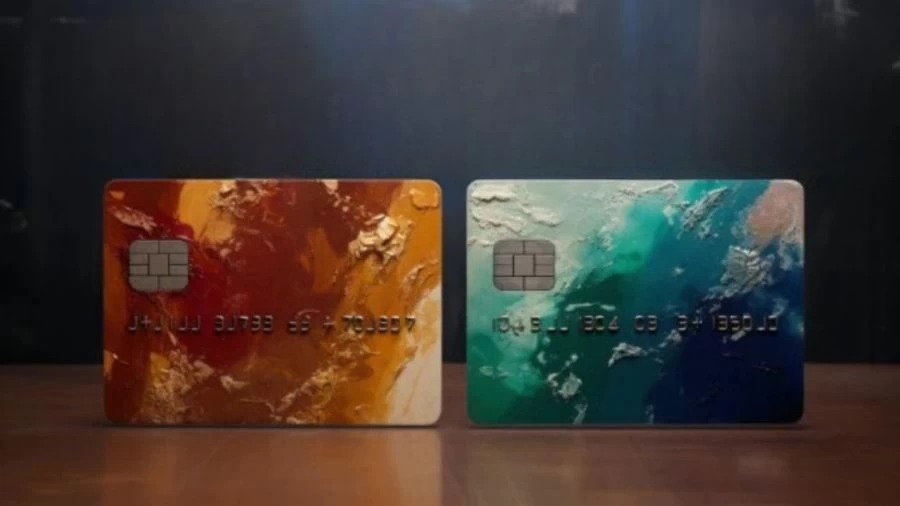
What is the Difference Between Open-end Credit and Closed-end Credit?
Open-end credit allows for continuous borrowing within a credit limit, while closed-end credit involves borrowing a specific amount with fixed repayments until the loan is fully paid off and the account is closed.
by Kowsalya
Published Jul 28, 2023 | Updated Nov 28, 2023 | 📖 11 min read
On This Page
- What is the Difference Between Open-End Credit and Closed-End Credit?
- What is Closed-End Credit?
- What is Open-End Credit?
- What are the Advantages and Disadvantages of Open-End Credit?
- What are the Advantages and Disadvantages of Closed-End Credit?
- How Does Closed-End Credit Work?
- How Does Open-End Credit Work?
What is the Difference Between Open-End Credit and Closed-End Credit?
Open-end and closed-end credit are two distinct credit facilities with significant differences. Open-end credit permits borrowers to access cash up to a predetermined limit, as seen in credit cards, HELOCs, and unsecured credits.
On the other hand, closed-end credit allows borrowers to receive a fixed lump sum amount, which they repay with interest on a specified future date. Failure to repay on time leads to penalties, while timely payments in open-end credit usually avoid interest charges.
| Aspect | Open-End Credit | Closed-End Credit |
|---|---|---|
| Purpose | Can be used for various purposes, such as daily expenses and purchases. | Typically used for specific purposes like buying a home or a car. |
| Repayment Terms | Repayment terms are flexible and may have no set end date. You can reuse the credit as you pay it down. | Requires repayment within a specified period, usually with equal monthly payments. |
| Examples | Credit cards, home equity lines of credit (HELOCs). | Mortgages, auto loans. |
| Collateral Requirement | Generally unsecured, with no collateral needed. | May require collateral, like the asset being purchased (e.g., a home or car). |
| Interest | Interest is charged only on the funds you use. | Interest is applied to the entire loan amount from the beginning. |
| Renewal Option | Credit lines can often be renewed or extended after a draw period. | No renewal; the loan is closed once fully repaid. |
| Borrowing Flexibility | Offers more flexibility in using credit for various needs. | Suited for specific purchases with less flexibility. |
| Best Suited For | Daily expenses, emergency funds, or situations where the end date is uncertain. | One-time large expenses like buying a home or a car. |
What is Closed-End Credit?
Closed-end credit is a specific type of loan or credit facility where the entire loan amount is disbursed in full when the loan is closed, and it must be repaid by a predetermined date. This repayment includes both the principal amount borrowed and the associated interest and finance charges. Closed-end credit agreements are commonly offered by financial institutions, banks, and credit unions.
They are often used by individuals and businesses to finance the purchase of high-cost items, such as houses, cars, boats, furniture, or appliances, with the obligation to make regular principal and interest payments. Some financial institutions may also use terms like "installment loans" or "secured loans" to refer to closed-end credit.
What is Open-End Credit?
Open-end credit, also known as revolving credit, is a type of loan or credit arrangement offered by banks and financial institutions where borrowers have the flexibility to withdraw and repay funds repeatedly, up to a predetermined credit limit. Importantly, open-end credit does not have a fixed end date for full repayment, and borrowers can continue to access and use the available credit as long as they adhere to the terms and conditions set by the lender. A common example of open-end credit is a credit card.
With open-end credit, the borrower's credit limit is established based on factors such as income and credit score. This limit represents the maximum amount they can charge. When the borrower makes payments to reduce their outstanding balance, the available credit is replenished, allowing them to use it again. However, interest accrues on the remaining balance, and borrowers typically must make at least a minimum monthly payment.
At MarketsHost, we unravel the complexities of Loans, equipping you with the knowledge and tools needed to navigate the financial world with confidence.
What are the Advantages and Disadvantages of Open-End Credit?
Advantages of Open-End Credit
Open-end credit provides borrowers with flexibility and convenience, allowing them ongoing access to a pre-approved credit limit and the freedom to borrow as needed, making it advantageous for managing variable expenses. Here is the list of Advantages of Open-End Credit:
Flexibility
One of the primary benefits of open-end credit is its flexibility. Borrowers can use the credit as needed, and there is typically no restriction on the purpose of the spending. This is in contrast to closed-end credit, where the funds are earmarked for a specific purchase. With open-end credit, you can use the available credit for various expenses, whether it's for everyday purchases, emergencies, or other financial needs.
Revolving Credit
Open-end credit, particularly in the form of credit cards, operates on a revolving credit basis. This means that as you pay down your outstanding balance, your available credit limit is restored. It provides a continuous source of funding, allowing you to reuse the credit as long as you make timely payments and manage your debt responsibly.
Interest on Funds Used
With open-end credit, you only pay interest on the funds you actually use. This means you have the option to carry a balance on your credit card while paying interest solely on the outstanding amount, as opposed to closed-end credit where interest accrues on the entire loan amount. It provides more control over your interest expenses.
Disadvantages of Open-End Credit
Despite its flexibility, open-end credit carries potential drawbacks, including the risk of accumulating high-interest debt and the temptation to overspend, necessitating cautious financial management. Here is the list of Disadvantages of Open-End Credit:
Interest Costs
Open-end credit, especially credit cards, can have higher interest rates compared to some closed-end loans. If you carry a balance from month to month, the interest charges can accumulate, making it a costly form of borrowing. It's essential to manage your credit wisely to avoid excessive interest expenses.
Temptation to Overspend
The ease of using open-end credit, such as credit cards, can lead to overspending and the accumulation of debt. The availability of revolving credit may encourage individuals to make purchases beyond their means, potentially leading to financial strain.
Credit Score Impact
Irresponsible use of open-end credit can negatively impact your credit score. High credit card balances relative to your credit limit (high credit utilization) can lower your credit score. Consistently missing payments or carrying large balances can harm your creditworthiness.
Potential for Endless Debt
Unlike closed-end credit with a fixed repayment term, open-end credit lines can theoretically last indefinitely. Without a clear end date for repayment, some individuals may struggle to pay down their balances, leading to ongoing debt.
What are the Advantages and Disadvantages of Closed-End Credit?
Advantages of Closed-End Credit
Closed-end credit provides borrowers with clarity and specific purpose, ensuring funds are used for intended goals. Here is the list of Disadvantages of Closed-End Credit:
Clarity and Specific Purpose
Closed-end credit is designed for a specific purpose, such as buying a house or a car. This clarity can be advantageous for borrowers as it ensures that the loan is used for its intended purpose, preventing misuse of funds.
Predictable Repayment
Closed-end credit comes with a fixed repayment schedule, typically involving equal monthly payments. Borrowers know exactly how much they need to pay each month, making budgeting and financial planning more manageable.
Lower Interest Rates
Closed-end credit often offers lower interest rates compared to open-end credit options like credit cards. These lower rates can result in reduced overall interest costs over the life of the loan.
Collateral
In some cases, closed-end loans are secured by collateral, such as the purchased property in the case of a mortgage or the financed vehicle in the case of an auto loan. This collateral can make it easier for borrowers to qualify for the loan and may result in lower interest rates.
Disadvantages of Closed-End Credit
Closed-end credit, while offering predictability, comes with rigid terms that may pose challenges during unexpected financial hardships. Here is the list of Disadvantages of Closed-End Credit:
Rigid Terms
The fixed terms of closed-end credit, while providing predictability, can also be a disadvantage. If borrowers face unexpected financial challenges, such as a job loss or medical expenses, it may be difficult to adjust the repayment schedule.
Limited Flexibility
Closed-end credit is typically earmarked for a specific purpose, which can limit its flexibility. Borrowers cannot easily use the funds for other needs or emergencies without going through a separate loan application process.
Risk of Collateral Loss
When closed-end credit is secured by collateral, such as a home or a car, there is a risk that the lender may seize the asset in the event of loan default. This risk can be particularly significant for borrowers who struggle to make payments.
Interest on the Entire Loan Amount
Unlike open-end credit, where interest is only charged on the funds used, closed-end credit typically accrues interest on the entire loan amount from the beginning. This means that borrowers end up paying interest on money they may not have used yet.
How Does Closed-End Credit Work?
Closed-end credit involves a structured agreement between a borrower and a financial institution, specifying a set loan amount, purpose, fixed or variable interest rates, regular equal payments, and, if applicable, collateral. Here's how it works:
Agreement
A borrower, either an individual or a business, enters into an agreement with a lender, typically a bank or credit union, to obtain a specific amount of money for a defined purpose.
Loan Details
The borrower and lender agree on various key aspects, including the amount to be borrowed, the interest rate to be charged, the duration of the loan, and the amount of monthly payments. These details are often influenced by the borrower's creditworthiness and the purpose of the loan.
Purpose of the Loan
Borrowers must inform the lender about the intended use of the loan. This is crucial because closed-end credit is typically earmarked for a particular purpose, such as buying a house, or a car, or financing a specific project. The lender may need to ensure that the funds are used for their intended purpose.
Interest Rates
Closed-end credit typically offers fixed interest rates, although in some cases, like mortgages, variable interest rates may be available. The interest rate is applied to the outstanding loan balance and accrues daily.
Monthly Payments
Borrowers are required to make regular monthly payments, and these payments are usually of equal amounts. These payments are calculated to ensure that the loan is fully paid off by the end of the loan term.
Collateral (if applicable)
In certain situations, the lender may require collateral to secure the loan. For example, in auto loans, the vehicle serves as collateral. If the borrower defaults on the loan, the lender can take possession of the collateral to recover the outstanding debt.
How Does Open-End Credit Work?
Open-end credit is a versatile and revolving borrowing arrangement, offering individuals or businesses access to funds within a predefined credit limit. This system allows users to make withdrawals, repay with flexibility, and continuously access available credit, making it a dynamic and ongoing financial tool. Here's how it works:
Credit Limit
When you open an open-end credit account, the lender establishes a credit limit based on your financial profile, including your income, credit history, and creditworthiness. This limit represents the maximum amount you can borrow.
Withdrawals
Once you have an open-end credit account, you can make withdrawals or purchases up to the credit limit as needed. For example, if your credit card has a limit of $10,000, you can make purchases, pay bills, or withdraw cash up to that amount.
Repayments
When you use open-end credit, you are required to make regular payments. However, unlike closed-end credit with fixed monthly installments, open-end credit offers flexibility in repayment. You have the option to pay the minimum monthly payment, which is a percentage of the outstanding balance, or you can choose to pay more if you wish. It's important to note that paying only the minimum may result in accumulating interest and a longer repayment period.
Revolving Credit
One of the defining features of open-end credit is its revolving nature. As you make payments, the amount you've repaid becomes available again. For example, if you have a credit card with a $5,000 balance and you pay off $1,000, you will have $1,000 of available credit restored.
Interest Charges
Open-end credit typically incurs interest charges on the outstanding balance. The interest rate can vary based on the type of credit and the lender's terms. It's essential to manage your credit wisely to minimize interest expenses.
No Fixed End Date
Open-end credit does not have a fixed end date for full repayment. As long as you make timely payments and manage your credit responsibly, you can continue to use the available credit indefinitely.
What is the Difference Between Open-end Credit and Closed-end Credit-FAQs
1. What is open-end credit?
Open-end credit refers to a type of credit where the borrower is given a credit limit that can be used repeatedly as long as the account remains open and in good standing.
2. What is closed-end credit?
Closed-end credit involves borrowing a specific amount for a predetermined period, and once the loan is fully disbursed, the account is closed.
3. What is the main difference between open-end credit and closed-end credit?
The primary difference lies in the terms and repayment structure. Open-end credit allows borrowers to use the credit repeatedly as long as they do not exceed the credit limit and make timely payments.
4. Which type of credit offers more flexibility in usage?
Open-end credit provides more flexibility in usage as borrowers can use the available credit for various expenses without restrictions on the purpose.
5. What are the repayment differences between open-end and closed-end credit?
Open-end credit requires minimum monthly payments, and borrowers can choose to pay more or less than the minimum as long as they stay within the credit limit.




